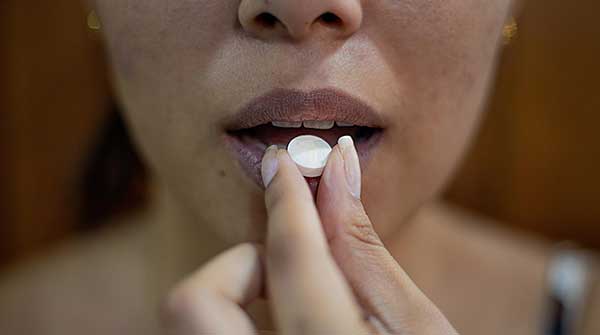The drugs target an enzyme involved in lowering blood sugar
Researchers have found that a class of older antipsychotic drugs could be a promising new therapeutic option for people with Type 2 diabetes, helping fill a need among patients who can’t take other currently available treatments.

“There is a growing need to find new therapies for Type 2 diabetes,” says John Ussher, professor in the Faculty of Pharmacy & Pharmaceutical Sciences and lead author of the recent study published in the journal Diabetes.
As Ussher explains, the drug metformin is one of the most common therapeutics for Type 2 diabetes, but about 15 per cent of patients aren’t able to take it. Another type of commonly used drug class (insulin secretagogues) to treat diabetes isn’t as effective for later-stage patients, who also need a different option.
“For the patients who can’t take metformin, patients with late-stage diabetes where their beta cells aren’t working as well, when you’re trying to find new therapies or new combination therapies as the disease progresses, it becomes more important to find new drug classes that target new mechanisms so then you have more options to try and lower blood sugar in those individuals,” Ussher explains.
 |
| Related Stories |
| Not enough men in their 40s get screened for diabetes: study
|
| A Canadian path to a regenerative cure to Type 1 diabetes
|
| Rethinking type 2 diabetes
|
The mechanism Ussher and his team turned their attention to is succinyl CoA:3-ketoacid CoA transferase (SCOT), an enzyme involved in the body’s process of making energy from ketones. They used computer modelling to find drugs that could potentially interact with SCOT and landed on an older generation of antipsychotic drugs, a drug class called diphenylbutylpiperidines, or DPBP for short.
Ussher and his team had previously found that a specific drug within this class called pimozide could be repurposed to help treat diabetes, but they’ve since expanded their focus to see whether more of the DPBP class could also be useful for treating the disease.
“We’ve tested three drugs now, and they all interact with this enzyme,” says Ussher. “They all improve blood sugar control by preventing the muscle from burning ketones as a fuel source.”
“We believe this SCOT inhibition is the reason these antipsychotics might actually have a second life for repurposing as an anti-diabetic agent,” he adds.
Developing a drug is a complicated, time-consuming and expensive process. It involves clinical trials to test the safety and efficacy of the drug and can easily cost hundreds of millions of dollars. Not to mention, it can take years to go from development in the laboratory to use in the clinic or hospital. Repurposing an existing drug may help fast-track the process, Ussher notes.
“With something that’s an older drug which we used historically in humans that we no longer use, we know what the adverse effects are, we know in general that it’s safe,” he says.
Though clinical trials are still needed, repurposing a drug allows researchers to focus specifically on the efficacy and safety of the new intended use – offering the potential to provide a new therapeutic more quickly and cost-effectively.
“As you already have safety data, it somewhat accelerates the process,” says Ussher. “And from an economic standpoint, often because a lot of these drugs being pursued for repurposing are older, they’re off patent and cheaper.”
Repurposing is effective because it capitalizes on a main characteristic of most drugs – they’re not restricted to just one target in the body. As Ussher explains, most drugs actually have numerous targets they can influence.
“That’s where repurposing comes in,” he says. “Can we identify the other targets that a drug may interact with, and by identifying those other targets, can this drug serve a purpose for a different disease?”
This is what Ussher’s lab did in recognizing that the DPBP drug class could target SCOT activity as well as the dopamine receptors it targets in its original intended use to treat psychosis.
Knowledge of these original targets can also provide valuable context when refining and improving the repurposed drug. Since DPBP drugs were originally antipsychotics, many of their potential side effects, such as drowsiness, dizziness or fatigue, arise from their effects on their original target: the dopamine receptors in the brain. Ussher’s lab is planning to try creating a modified version of the drug class that doesn’t reach the brain and has fewer potential adverse effects.
“For us, the excitement is that it looks like the entire family of these compounds interacts with this protein [SCOT] and can improve blood sugar control in Type 2 diabetes.”
| By Adrianna MacPherson
Adrianna MacPherson is a reporter with the University of Alberta’s Folio online magazine. The University of Alberta is a Troy Media Editorial Content Provider Partner.
The opinions expressed by our columnists and contributors are theirs alone and do not inherently or expressly reflect the views of our publication.
© Troy Media
Troy Media is an editorial content provider to media outlets and its own hosted community news outlets across Canada.
